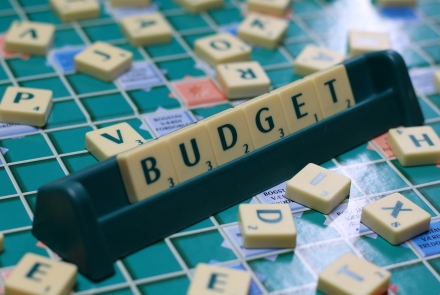
Jesper Sehested on Flickr
Rates could rise
Australian interest rates could start to rise as early as this week and ahead of the May 8 Federal Budget, with Crawford School’s Reserve Bank of Australia (RBA) Shadow Board divided on whether keeping rates steady, or a rate hike, is the appropriate setting for the economy.
The board of the RBA will meet on Tuesday 1 May to review official interest rates, which have been at a record low of 1.5 per cent since August 2016.
Chair of the RBA Shadow Board Dr Timo Henckel said while inflation remains in check and unemployment is steady, reports suggesting the federal Budget and fiscal policy will be more expansionary than first thought have increased the likely need for a rate rise.
“The RBA Shadow Board attaches a 49 per cent probability that holding interest rates steady is the appropriate setting, while the confidence in a required rate hike has increased for the fourth month in a row, to 51 per cent,” Dr Henckel said.
“Thus, the Shadow Board finds that a rate increase of 25 basis points is most likely the best setting, if only by a small margin.”
Australia last experienced a rise in official interest rates on 3 November 2010, when the cash rate rose 0.25 points to 4.75 per cent.
“Attention now focuses on the budget,” Dr Henckel said. “Given the consolidation of the Australian economy, an expansionary budget will heighten the need for an interest rate increase.
“Yields on Australian 10-year government bonds have continued their recent gentle decline, but have risen from approximately 2.6 per cent at the end of March to above 2.8 per cent. This increase may well be a reflection of the market taking note of recent comments by the RBA that interest rate increases are probably in the pipeline, even if not in the immediate future.”
Internationally, he said global stock markets have continued to consolidate and volatility indexes are also falling slightly. Mixed signals abound about the global geopolitical risks, with US sabre rattling with North Korea and Iran, but with peace talks between the two Koreas.
“US trade policy, along with any retaliatory measures by its trading partners, remain a source of uncertainty but this does not appear to have immediately affected global trade,” Dr Henckel said.
In the longer term, the probability for a needed rate hike in six months was unchanged from last month at 76 per cent.
The probability that rates should remain at 1.5 per cent in six months was 21 per cent, while the probable need for rates to fall in six months was four per cent, both unchanged from a month ago.
The RBA Shadow Board is a project based at the Centre for Applied Macroeconomic Analysis (CAMA) at Crawford School. It brings together nine of the country’s leading experts to look at the economy and make a probabilistic call on the optimal setting of interest rates ahead of monthly RBA Board meetings. It does not try to predict RBA behaviour. The RBA Shadow Board includes Professor Bob Gregory and Professor Warwick McKibbin, who have both served on the RBA Board.
Other members are Paul Bloxham of HSBC, Dr Mark Crosby, Professor Guay Lim of the University of Melbourne, James Morley of University of New South Wales, Jeffrey Sheen of Macquarie University, Professor Mardi Dungey of University of Tasmania and John Romalis, Professor of economics at the University of Sydney.
Professor Bob Gregory and Professor John Romalis did not vote in this round.
Dr Henckel’s full commentary is available on the CAMA Shadow RBA Board website.
Updated: 30 June 2024/Responsible Officer: Crawford Engagement/Page Contact: CAP Web Team













